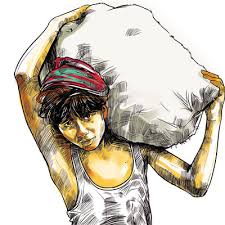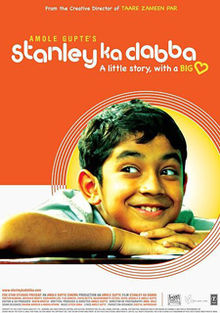Even though Indian society has chosen to disregard child labour, the entertainment business has constantly featured this revile with different movies, for a long time. With the world’s largest population of child labour, one would envision that society would be extremely dedicated towards wiping out this blotch, yet one witnesses thousands of children constrained in the process of child labour from an exceptionally young age, working at tea shops and cafés as opposed to attending schools.
However, the Indian entertainment industry has attempted to lay focus on the issue. The producers have endeavoured to feature the reasons that force the children to build their livelihood. From films like Salaam Bombay to Stanley ka Dabba, the film industry has managed to portray the hardships and cruelty faced by poverty-ridden kids.

We bring you a selection of films that have left a lasting impression on the minds of the cine-goers. Films like Boot Polish and Dosti, which were made during the brilliant period of Hindi film during the 1950s, are the most punctual illustration of motion pictures that have displayed child labor through their storytelling. In Boot Polish (1954), a story of two orphan kids, director Prakash Arora, weaves the story around their battle to live under the care of their wicked aunt, and the solid bond that the two kin share despite affliction turns into the enthusiastic driving purpose of the film.
Towards the end of the 1980s, Salaam Bombay (1988) directed by Mira Nair and co-written with Sooni Taraporevala hit the Indian theatres to widespread critical recognition and accomplished clique status in the realm of parallel cinema in Bollywood. The story is set in a red-light territory of Mumbai where young ladies are constrained into prostitution and the little youngsters are made to ask, take and do numerous other unspecialized temp jobs for their managers. The film opened up the most obscure back streets of the human enduring in the Greatest City to the crowds. Among its intricate theme of poverty, child labor was at the core of the story.

In 2008, an independent drama film, Slumdog Millionaire, revolving around slum kids became the most awarded film of the night at the world’s greatest film stage, the Oscars. It depicts the existence of youngsters staying in ghetto territories who are kidnapped by criminals and prepared to beg for a living. Children as young as seven are blinded to gain sympathy from people, who are likely to pay them more due to their condition. The brutally honest storytelling of the male protagonist’s journey from rags to riches was enough to bring to the surface the harsh reality of our nation’s most vulnerable sections and leave the viewers stumped to the core.
In the past decade, many small independent films have been made revolving around kids and the brave journey they embark upon to take care of themselves and their dreams. Notably movies like Chillar Party, I am Kalam, Nanhe Jaisalmer all had child labour as part of the life of the central characters of these stories.
Among these, the one which succeeded to touch the depths of the impact that poverty has on the children who survive in it is Stanley Ka Dabba (2011). A film made by Amole Gupte in which he plays the role of the antagonist, Verma, a Hindi teacher who lusts after the tiffin boxes of everyone around him. The central character is a kid, Stanley, a fourth-grader who is so poor that he cannot afford to bring his tiffin while his classmates enjoy multiple dishes every day during recess.

A scene from the film where the kid with a wounded face looks powerless and hungry watching his companions make the most of their food, lastly chooses to drink water to satisfy his yearning delivers the youngster’s guiltlessness and the treachery fashioned upon the kid’s life. In the peak of the film, it is uncovered that Stanley is an orphan who does not have a home and lives close to the café at which he works. He is frequently physically abused by the proprietor of the restaurant, his uncle, leaving him badly bruised for remaining absent from work for the majority of the day. The movie bares open the wounds of an underprivileged kid so deep that you would want to reach out to him and hug him to lighten your soul for days to come.
The child labour situation in India is frantic where parents forfeit their kids’ formal growth and development to the immediate needs of their ever-growing family. The innocence and the financially secure future get compromised when the little ones begin to be viewed as breadwinners for the whole family. While the elite may accuse the system, poverty, illiteracy, adult unemployment, the truth of the matter is that the whole country is liable for each wrongdoing against a child. We all continuously side line the damage when we employ a minor, even if for a few minutes; when we do not adhere to the adult wage rate; and when education and rights are deemed privileges of the well off, and we turn a blind eye to the school drop-outs.
Aashi is a working PR professional who enjoys a good amount of her free time reading, cooking, and taking care of her 2 dogs.